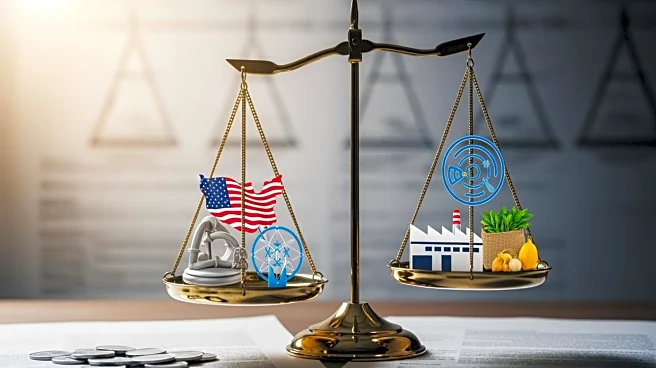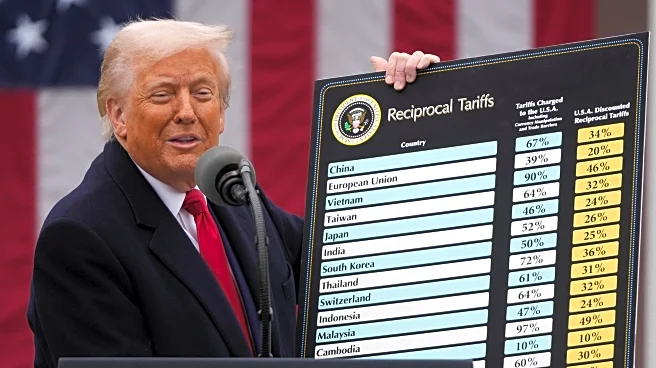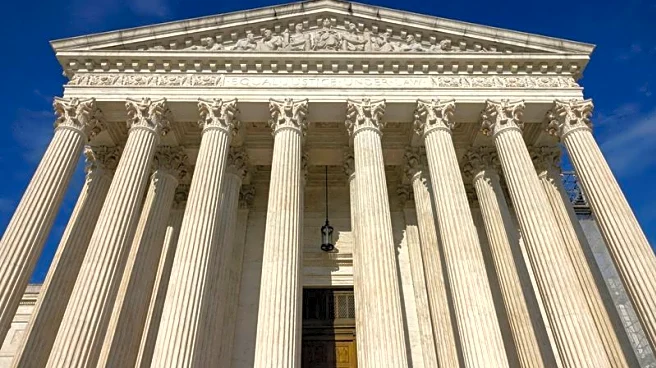What's Happening?
The Supreme Court is currently deliberating on the legality of tariffs imposed by President Trump, which have significantly increased costs for various goods imported from countries such as China, Canada,
Mexico, and Europe. These tariffs are being challenged by five small businesses, including a wine importer and a pipe and fittings company, who argue that the tariffs are causing substantial financial burdens. The businesses claim that President Trump illegally used emergency powers to bypass Congress in implementing these duties. Analysts suggest that even if the tariffs are overturned, trade policy uncertainty could persist, potentially affecting hiring and business investment.
Why It's Important?
The outcome of this Supreme Court case could have profound implications for U.S. businesses and consumers. If the tariffs are deemed illegal, it could lower costs for businesses and consumers, alleviating some of the financial pressures currently faced. However, the removal of tariffs might also lead to increased trade policy uncertainty, which could delay business investments and hiring, further impacting the labor market. Small businesses, in particular, have been disproportionately affected by these tariffs, facing higher trade costs and potential financial instability.
What's Next?
Should the Supreme Court rule against the tariffs, the Trump administration may seek alternative legal avenues to reimpose them. Treasury Secretary Scott Bessent has indicated that President Trump could use a statute from 1930 to impose tariffs of up to 50% on countries that discriminate against U.S. commerce. Additionally, if the court demands refunds of tariff revenues, it could create logistical challenges and potentially increase consumer inflation pressures. The administration's response and subsequent actions will be closely watched by businesses and economic analysts.
Beyond the Headlines
The legal and economic ramifications of this case extend beyond immediate financial impacts. The decision could set a precedent regarding the extent of presidential powers in trade policy, influencing future administrations. It also highlights the ongoing debate about the balance between national economic interests and global trade relations, with potential long-term shifts in how the U.S. engages in international commerce.













